What Is Pneumatic Structures?
Important Point
Pneumatic Structures are the special type of structure which is generally characterized by the slightly higher air pressure of internal surrounding.
The word ‘Pneumatic’ means the structures which is constructed with the support of Air Pneumatic structures was introduced in the Building Technology about 40 years ago.
The pneumatic structure is a membrane structure which is stabilized with the help of the compressed air. The Pneumatic structures are a very cost-effective type of Buildings for the longer span.
The roof of the pneumatic structures are made from the rubber or enforce film with the help of polymers. The weight of the roofing membrane is balance and maintain with the help air compressors or blowers.
Pneumatic structures are environment-friendly structures. In the construction of the Pneumatic structures, the pressure difference between the enclosed space and the exterior is responsible for building for its shape and stability.
Pneumatic structures are the combination of two components with different properties which is an airtight membrane and compressed air.
One of the Disadvantages of the pure pneumatic structures is that it required high air pressure to maintain its shape. The pneumatic structures are generally made from the laminated membranes such as nylon, fibreglass polyester, silicon rubber etc.
The shape of the Pneumatic structure is round because it creates a larger volume for less amount of material. The pneumatic structure is a membrane which can carry the total load develop from the tensile stresses.
The stabilization of the Pneumatic structure is done with the help of pre-stressing of the membrane. The pre-stressing of the membrane is done by applying an external force to put the membrane.
Pneumatic architecture structures are used widely for the construction of permanent as well as temporary structures. Pneumatic structures can develop an artificial environment that is adaptable for humans. The foundation required for the Pneumatic structure is secured to the ground using Heavyweights.
The material which is used for the envelope is as follows.
- Fibreglass which has high tensile strength and durability
- Polyester or PVC coated polyester which is flexible.
- Nylon or vinyl-coated nylon which has more strength and durability.
Also, Read: Precipitation | Type of Precipitation | Cyclonic Precipitation
Principle of Pneumatic Structures
- The principle of the Pneumatic structure is the use of a very thin membrane that is supported by a pressure difference.
- The Dead weight of the space available in the envelope is balanced by increasing the inside air pressure.
- The thin membrane gets stress to the point where it cannot be indented by the asymmetrical loading.
Types of Pneumatic Structures
There are mainly two types of Pneumatic structures
- Air supported pneumatic structures
- Air inflated pneumatic structures
Also, Read : What Is Superstructures | Difference Between Load-Bearing and Framed Structures
1. Air Supported Pneumatic Structures
Air supported structures have Air higher than the atmospheric pressure supporting the envelope. Air supported inverter structures are supported by the internal air pressure and use of a network of the cable stiffen the fabric.
The lifespan of the Air supported structures is 20 to 25 years. The Air supported Pneumatic structures have a relatively low cost. The Internal pressure in the air-supported structures is maintained above the Normal atmospheric pressure with the help of compressors or fans.
It should be provided with Airlocks which are required to prevent the loss of internal air pressure.
Also, Read: Cantilever Bridge | Cantilever Bridge Advantages and Disadvantages | Cantilever Bridge Facts
2. Air Inflated Pneumatic Structures
Air inflated structures are supported by pressurized air which contained with an inflated building element. Air inflated structures are supported with the help of pressurized air within inflated building elements in the different shapes that will carry the loads.
In the air-inflated structures, the air under high pressure fills only in the supporting elements of the pneumatic structure. The internal pressure of the air Inflated structures remains at the atmospheric pressure.
Also Read: Light Flux
Characteristics of the Pneumatic Structures
Pneumatic structure, Membrane structure that is stabilized by the pressure of compressed air.
Air-supported structures are supported by internal air pressure. A network of cables stiffens the fabric, and the assembly is supported by a rigid ring at the edge.
List of Characteristics of the Pneumatic Structures
- Weight of the Pneumatic Structures
- The Span of the Cinematic Structures
- Safety of the Parametric Structures
- The Time Required for Construction of Pneumatic Structures
Weight of the Pneumatic Structures
- The Pneumatic structures are lightweight.
- The weight of the Pneumatic structures as compared to the area on which it is constructed is very less.
- The lower pressure is sufficient to balance it.
The Span of the Cinematic Structures
- There is no theoretical maximum span for the Pneumatic structure. It varies as per the need and the design.
Safety of the Parametric Structures
- Pneumatic structures are safer as compared to conventional building structures.
- Cinematic structures are fire resistance.
The Time Required for Construction of Pneumatic Structures
- Pneumatic structures can be quickly erected and dismantled.
- Pneumatic structures are suitable for the construction of temporary buildings.
- Good Natural lighting and ventilation can be provided in the Pneumatic Structures.
- The pressure of the Pneumatic structures ranges from 80-100 mm.
Advantages of Pneumatic Structures
The Advantages of the Pneumatic structures are as follows.
- Pneumatic structures are lightweight
- Pneumatic structures can cover a larger area of span without any type of internal support.
- Pneumatic structures are economical as compared to other structures.
- The construction and the assembly of the Pneumatic structures are very fast.
- Pneumatic structures can be used to construct a whole structure as an entity.
- Pneumatic structures can be used for both temporary as well as permanent structures for various purposes.
- The initial cost of construction of Pneumatic structures is less as compared to a conventional building.
- The operation cost of periodic structures is also less as compared to a conventional building.
Disadvantages of Pneumatic Structures
The Disadvantages of Pneumatic structures are as follows
- Pneumatic structures are less durable and have a short service life.
- Pneumatic structures are poor resistance to fire and the acoustic insulation.
- The enclosed membrane of the Pneumatic structures required maintenance of excess pressure.
Also, Read: Fish Ladder | What Is Fish Ladder | Types of Fish Ladder | Fish Ladders in Dams
Uses of the Pneumatic Structures
The various uses of pneumatic structures are as follows
- Pneumatic structures can be used for the mobile buildings such as maintenance station, camps medical aid stations etc.
- Pneumatic structures can be used for permanent as well as temporary buildings for various purposes like seminar halls, production area and Godowns, stadium etc.
- Pneumatic Structures examples the Military structures which are used for storage and other emergency medical operations.
- Structures for Botanical gardens or zoological gardens.
Pneumatic Structures Examples
There are various examples of pneumatic structures are as follows
- The pneumatic roof is the roof with the largest span without the support of columns. This type of rule is very helpful for climate control.
- The Pneumatic structure example is the Syracuse Carrier Dome.
- The Allianz Arena stadium in Germany is the largest pneumatic structure.
Pneumatic Structures
A pneumatic structure is a system of components that is supported by air in the same manner that a balloon is supported by air. The components of a pneumatic structure consist of a membrane, supporting cables, and anchorage system and an HVAC system.
Pneumatic Architecture
Pneumatic structure, Membrane structure that is stabilized by the pressure of compressed air. Air-supported structures are supported by internal air pressure. A network of cables stiffens the fabric, and the assembly is supported by a rigid ring at the edge.
Pneumatic Structures for Events
Pneumatic structures, also known as inflatable structures, have gained popularity in recent years as versatile and eye-catching solutions for various events. These structures utilize air pressure to create temporary, lightweight, and flexible enclosures that can be used for a wide range of purposes.
Advantages of Pneumatic Structures
Pneumatic structures, also known as inflatable structures, offer numerous advantages in various applications. Here are some key advantages of pneumatic structures:
- Flexibility and Customization: Pneumatic structures are highly flexible and customizable. They can be designed and manufactured in a wide range of shapes, sizes, and configurations to suit specific needs. Whether it’s a temporary event structure, a portable shelter, or an inflatable pavilion, the flexibility of pneumatic structures allows for creative and tailored solutions.
- Quick Assembly and Disassembly: Inflatables can be rapidly inflated and deflated, leading to quick assembly and disassembly times. Unlike traditional structures, which often require extensive construction or installation processes, pneumatic structures can be set up and taken down relatively quickly. This saves time and effort, making them particularly suitable for temporary or mobile applications.
- Portability and Lightweight Construction: Pneumatic structures are lightweight and highly portable. The materials used in their construction, such as PVC or nylon, are lightweight yet durable. When deflated, these structures can be compactly packed and transported to different locations with ease. The portability of pneumatic structures enables their use in a variety of settings, including outdoor events, festivals, trade shows, and disaster relief efforts.
Pneumatic Structures in Architecture
pneumatic structure, Membrane structure that is stabilized by the pressure of compressed air. Air-supported structures are supported by internal air pressure.
Pneumatic Structures Vs Traditional Buildings
Pneumatic structures and traditional buildings are two distinct approaches to construction, each with its own set of advantages and disadvantages. Let’s explore the characteristics of both:
Pneumatic Structures:
Pneumatic structures are buildings or enclosures that utilize pressurized air or gases to maintain their shape and structural integrity. They typically consist of a lightweight and flexible membrane supported by internal air pressure. Here are some key points regarding pneumatic structures:
Traditional Buildings:
Traditional buildings encompass a wide range of construction methods and materials that have been used for centuries. They typically consist of a solid framework made of materials like wood, concrete, steel, or masonry, with various interior and exterior finishes. Here are some key points regarding traditional buildings:
Pneumatic Structures for Temporary Shelters
Pneumatic structures can indeed be a suitable option for temporary shelters due to their portability and quick assembly. Here are some reasons why pneumatic structures are often used for this purpose:
- Rapid deployment: Pneumatic structures can be inflated and assembled quickly, which is beneficial in emergency situations or when time is of the essence. They can provide immediate shelter for displaced individuals or during disaster relief efforts.
- Lightweight and portable: Pneumatic structures are typically lightweight and easy to transport. They can be deflated and packed into a compact form for transportation to different locations, making them ideal for temporary shelters that may need to be set up in various places.
- Cost-effective: Pneumatic structures are often more cost-effective compared to traditional building materials and construction methods. This makes them a viable option for temporary shelters, especially in situations where budget constraints are a factor.
Pneumatic Structure Building Examples
- The Eden Project Biomes (United Kingdom): The Eden Project in Cornwall, UK, is known for its iconic biomes, which are large pneumatic structures made of transparent ETFE (ethylene tetrafluoroethylene) material. These biomes house different climatic zones, creating artificial environments for various plant species.
- The Water Cube (China): Also known as the National Aquatics Center, the Water Cube was a prominent venue during the 2008 Beijing Olympics. Its distinctive pneumatic structure was made of ETFE cushions, giving it a bubble-like appearance.
- The EXPO Bubble (Spain): The EXPO Bubble, located in Zaragoza, Spain, was a temporary pavilion constructed for the 2008 International Exposition. It featured a large translucent pneumatic structure that served as an exhibition space.
- BubbleTree: BubbleTree is a company that specializes in producing inflatable bubble-like structures that can be used as unique accommodations or temporary living spaces. These structures provide a comfortable and immersive experience in natural surroundings.
Pneumatic Building
A pneumatic building, also known as an inflatable or air-supported structure, is a type of temporary or semi-permanent structure that is constructed using flexible materials and supported by internal air pressure. These structures are typically made of high-strength fabrics or membranes, such as polyester or PVC, and are inflated with air to create a rigid and enclosed space.
Pneumatic Structure Contains
Pneumatic structures are membrane structures comprised of the volume of inflated air. Pneumatic structures are membrane structures comprised of the volume of inflated air.
Pneumatic Structures Case Study
The Water Cube – Beijing National Aquatics Center
The Water Cube, officially known as the Beijing National Aquatics Center, is a prominent example of a pneumatic structure. It was designed for the 2008 Summer Olympics held in Beijing, China. The architects responsible for its design were PTW Architects, Arup, and CSCEC.
Pneumatic Structure System
A pneumatic structure system refers to a type of structural system that utilizes pressurized air or gas to create and maintain the shape and stability of a structure. It involves the use of airtight membranes or inflatable elements to form the structural elements, such as walls, roofs, or domes.
Air Supported Pneumatic Structures
An air-supported (or air-inflated) structure is any building that derives its structural integrity from the use of internal pressurized air to inflate a pliable material (i.e. structural fabric) envelope, so that air is the main support of the structure, and where access is via airlocks.
Types of Pneumatic Structures
Four types of pneumatic structure: Low positive pressure, high positive pressure, hybrid (low and high positive pressure), high negative pressure.
Innovative Applications of Pneumatic Structures
Pneumatic structures, also known as inflatable structures, have been used in various innovative applications due to their lightweight, flexible, and easily deployable nature. Here are some examples of innovative applications of pneumatic structures:
- Emergency Shelters: Inflatable structures are often used as emergency shelters in disaster-stricken areas. They can be quickly deployed and provide temporary housing for displaced individuals. These structures are lightweight, portable, and can be easily transported to remote locations where traditional shelters are difficult to set up.
- Event and Exhibition Spaces: Inflatable structures are used to create temporary event spaces, such as exhibition halls, concert venues, and sports arenas. Their flexibility allows for versatile configurations, and they can be quickly inflated and deflated, providing a cost-effective solution for hosting large-scale events.
- Greenhouses and Crop Production: Pneumatic structures are utilized in agriculture for greenhouse applications. The transparent inflatable membranes allow sunlight to penetrate while retaining heat and moisture inside, creating an ideal environment for plant growth. They can be easily assembled and disassembled, making them suitable for seasonal crop production or as temporary extensions to existing greenhouses.
Like this post? Share it with your friends!
Suggested Read –
- Piles Structure
- Total Station Definition
- Difference Between CPM and PERT | What Is CPM & PERT
- Hempcrete Vs Concrete | What Is Hempcrete | What Is Concrete
- Difference Between Veneer and Laminate | What Is Veneer | What Is Laminate
- Difference Between Compaction and Consolidation | What Is Compaction | What Is Consolidation
- PVB Vs SGP | What Is Limited Glass | What Is Polyvinyl Butyral (PVB) | What Is Sentry Glass Plus (SGP)
- BHK Full From | What Is BHK | What does 1BHK, 2BHK, 3BHK, 4 BHK, 2.5 BHK, 1 RK, 2 BHK 2T, 3 BHK 2T, 3 BHK 3T Mean
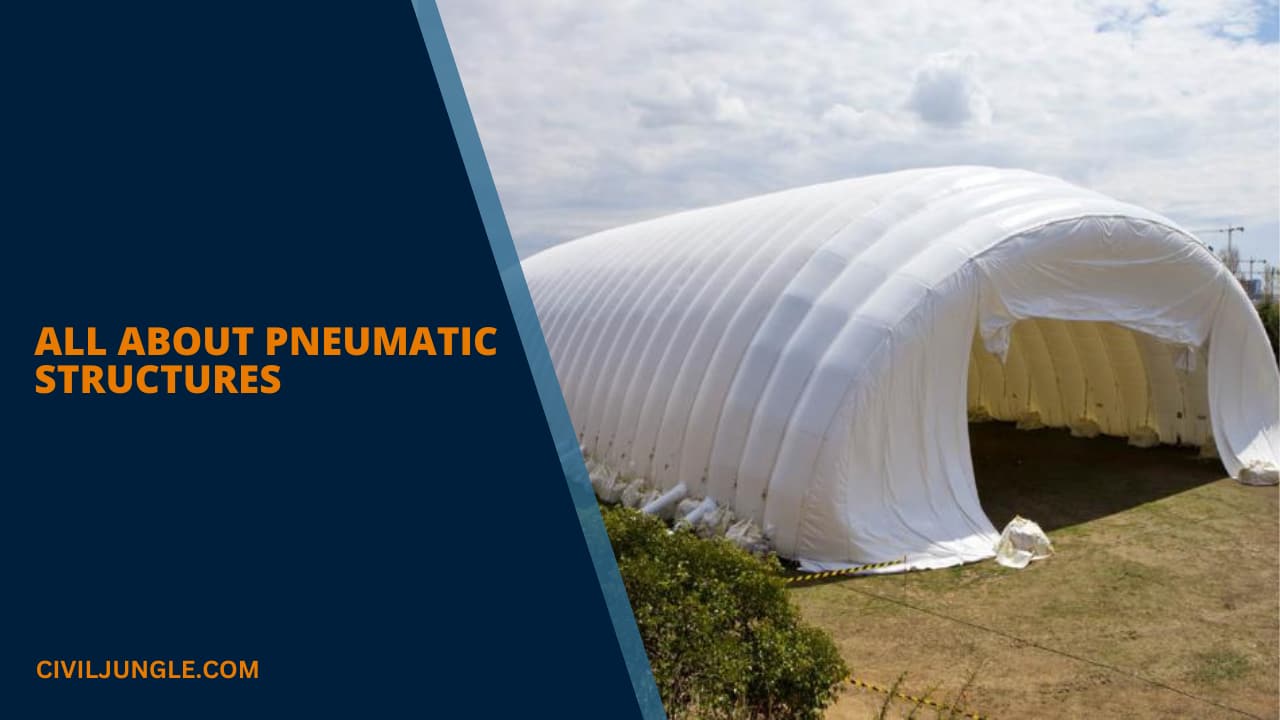
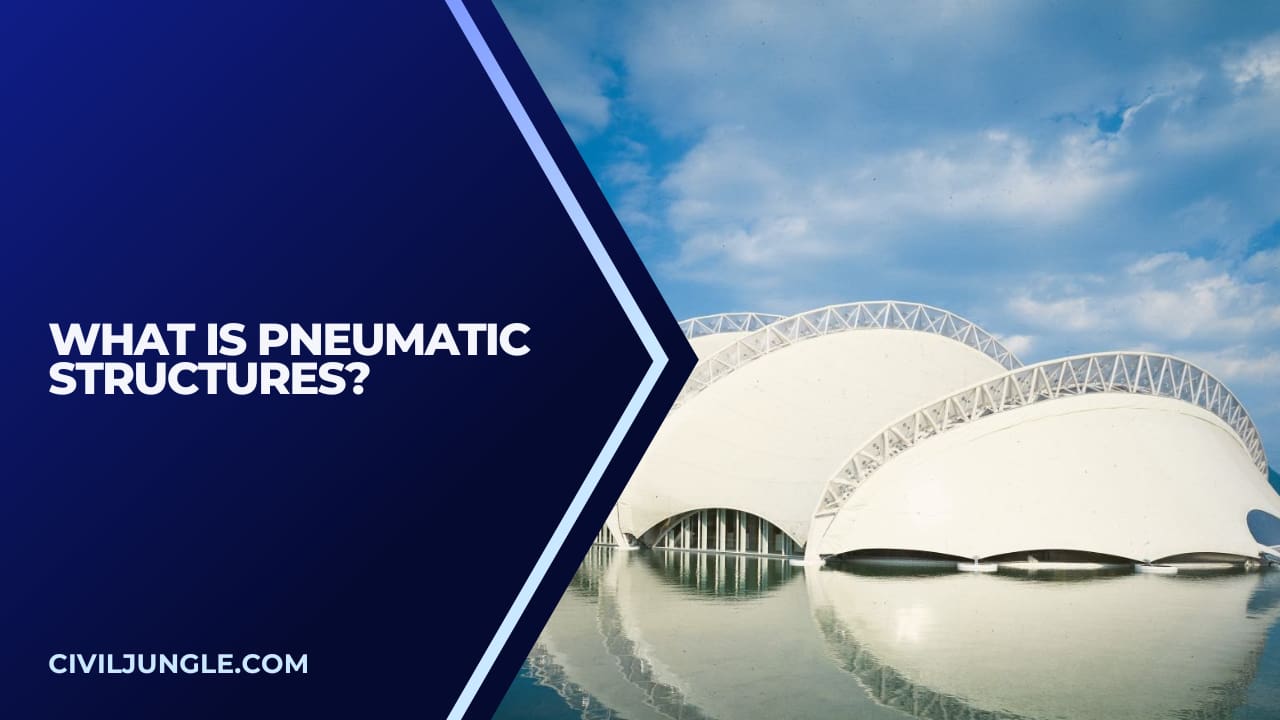
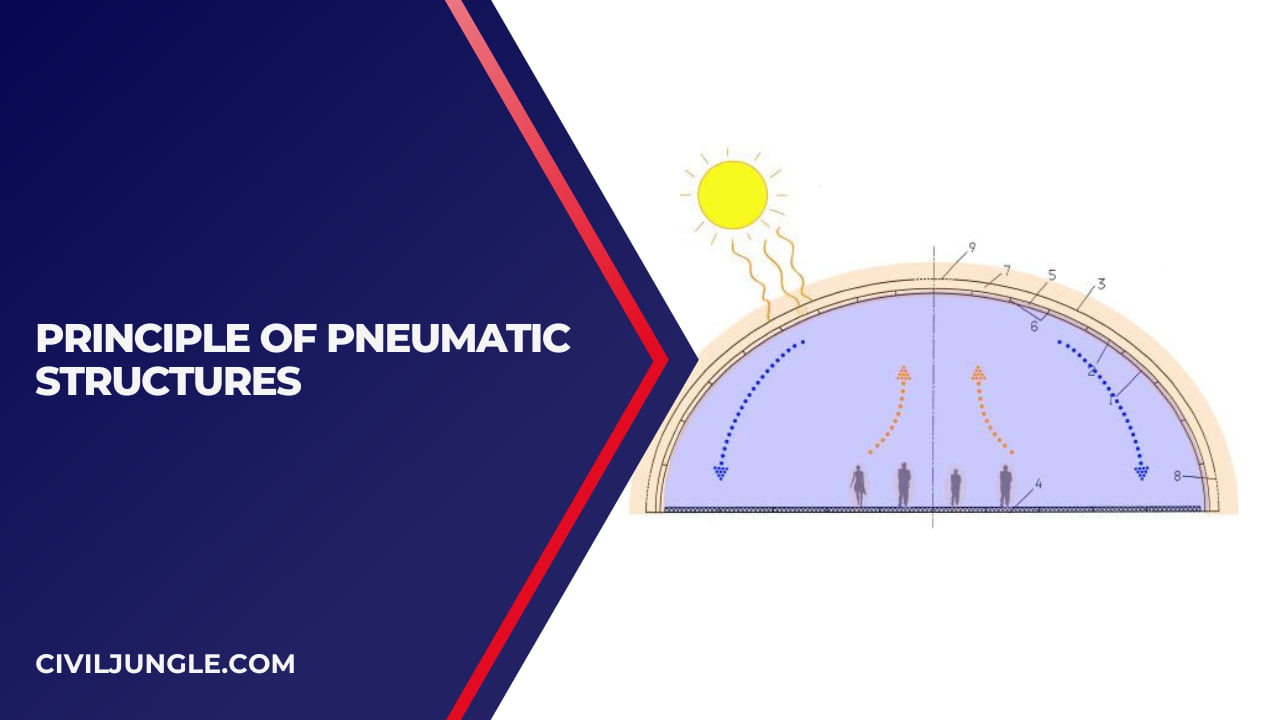
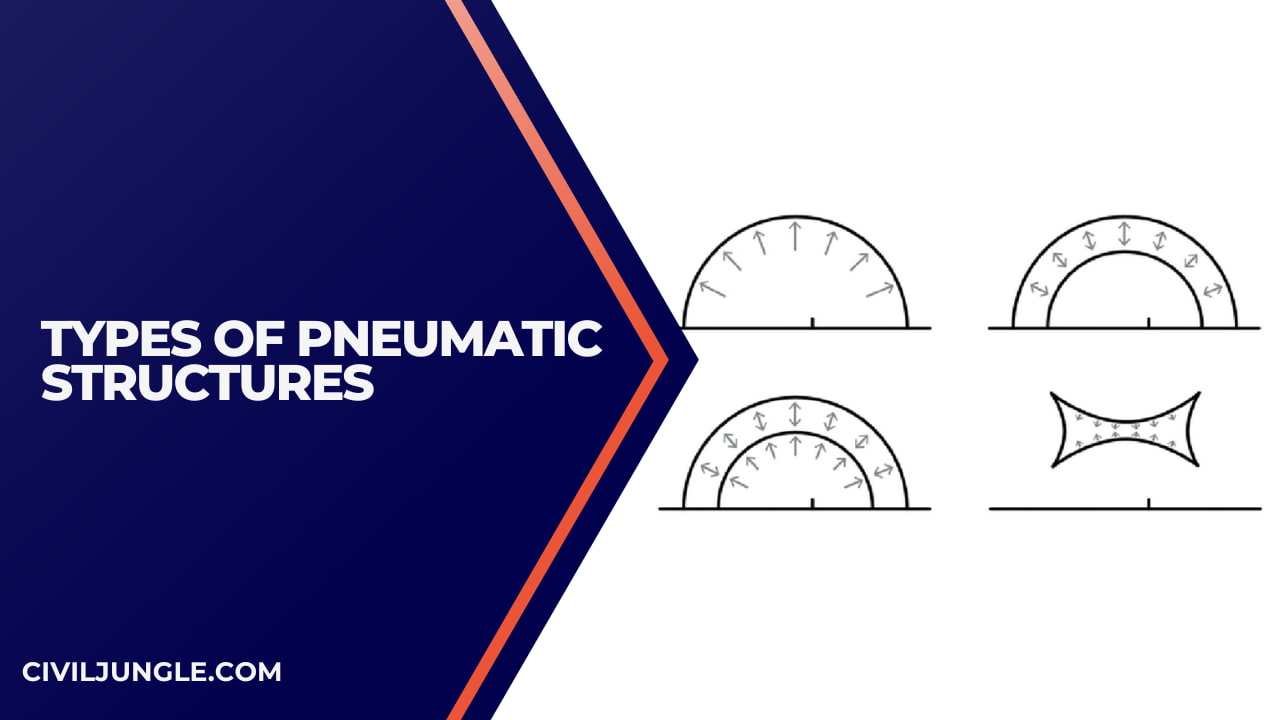
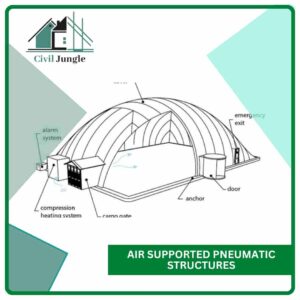
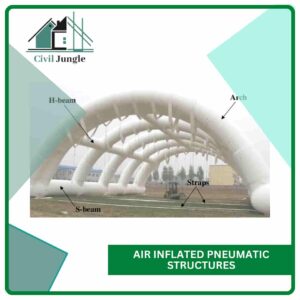
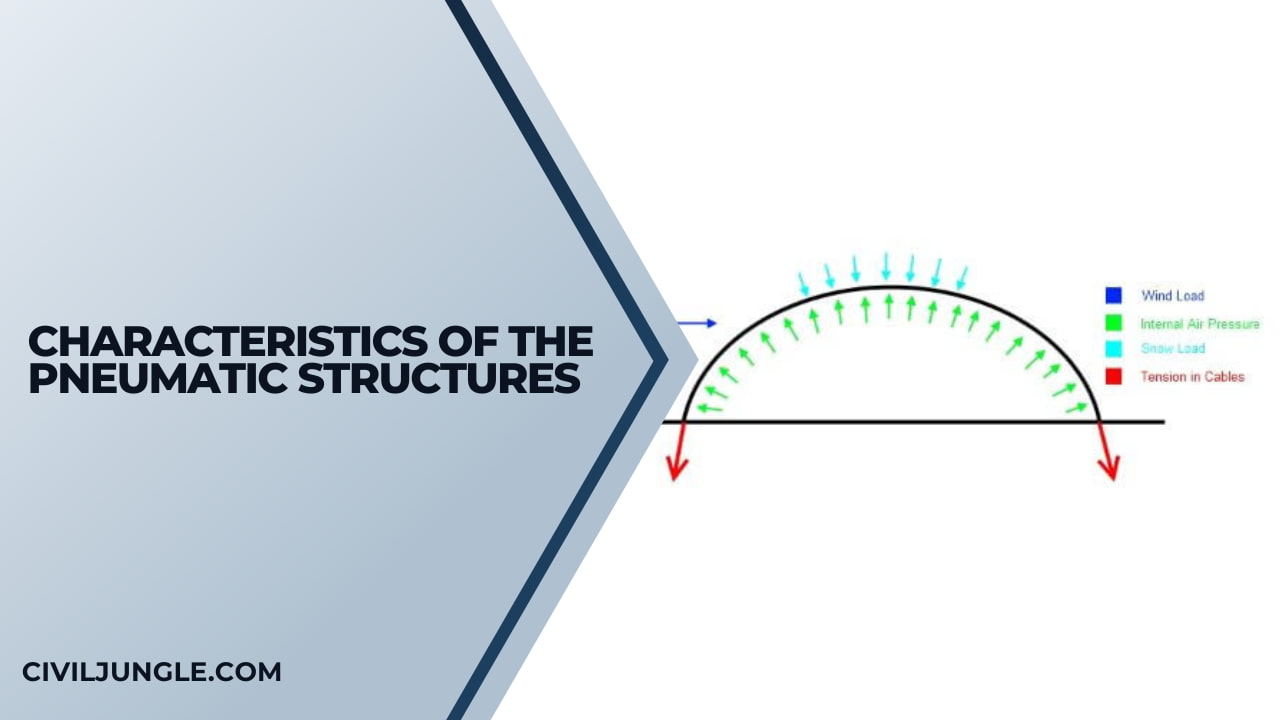
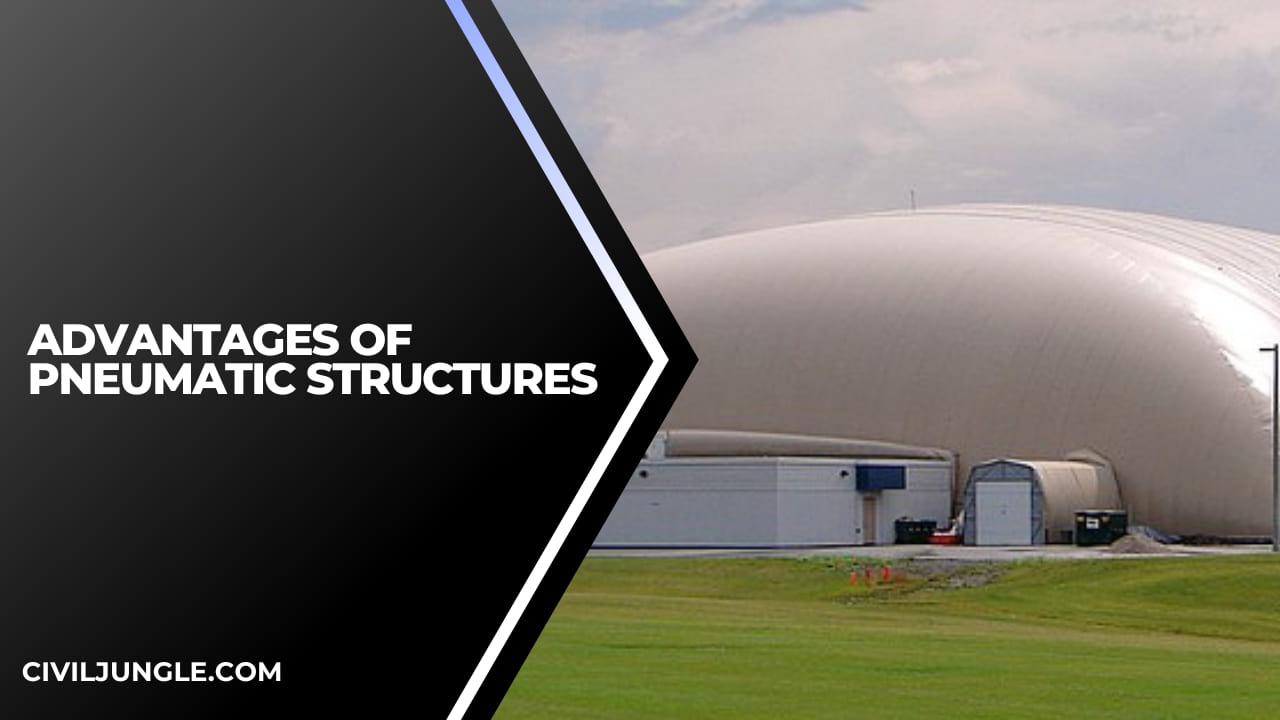
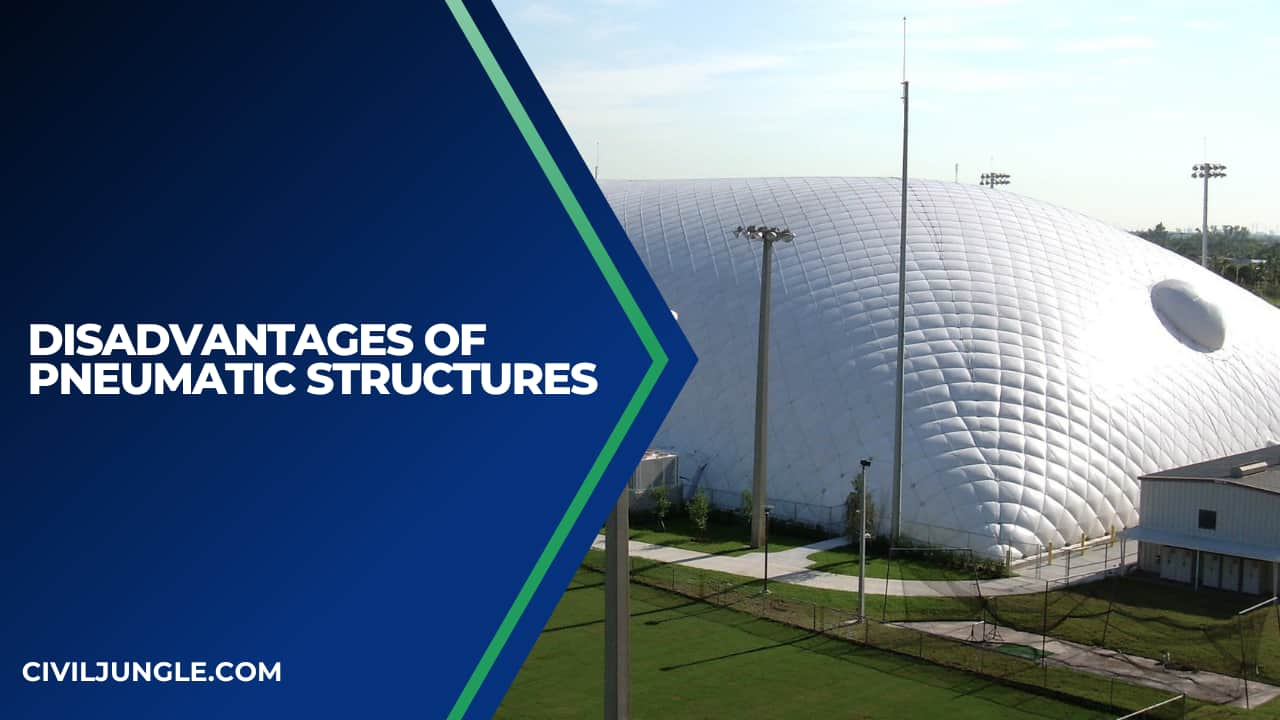
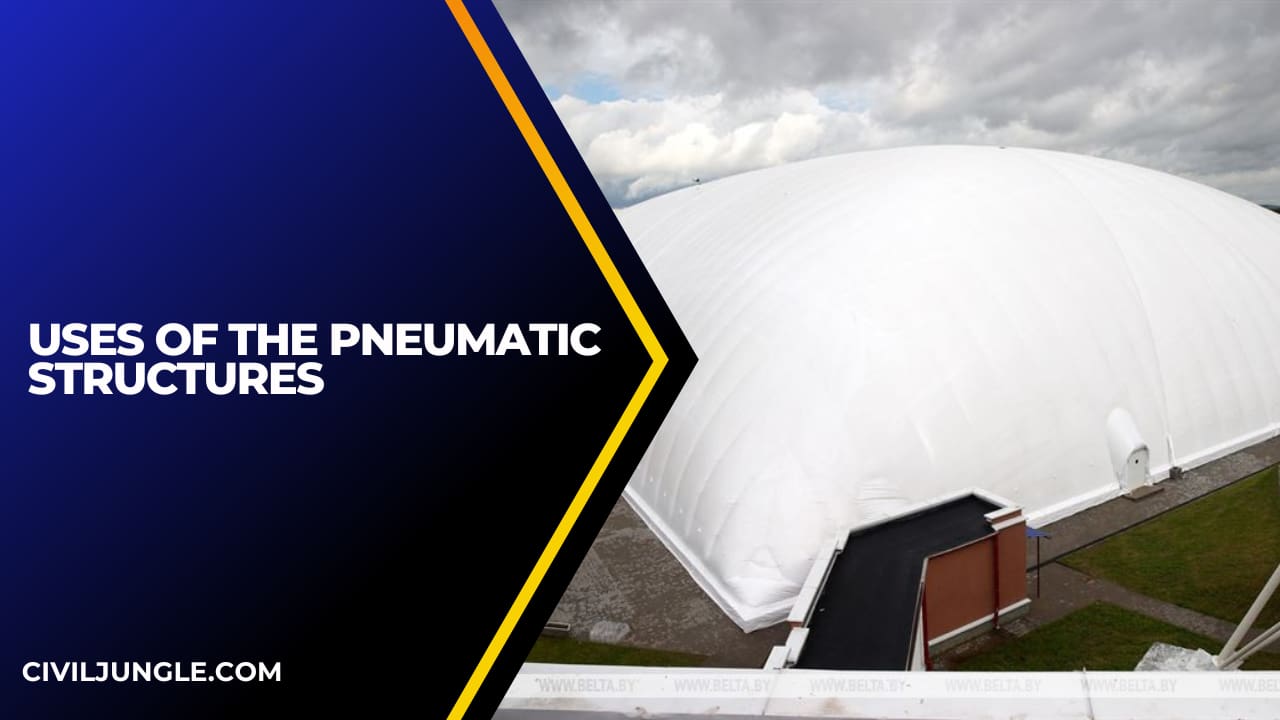
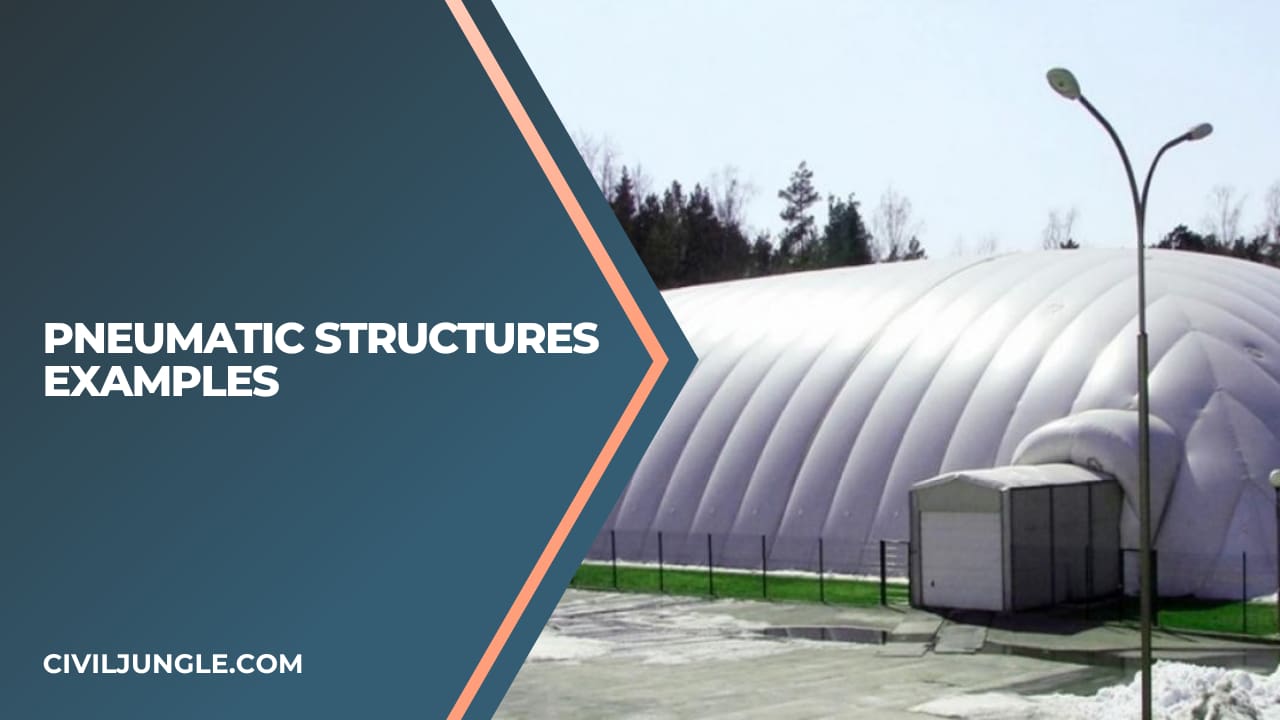

This is amazing thanks for sharing this blog I become fan of your blogs now. This blog is so interesting and informative.